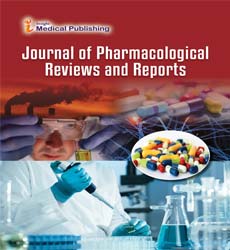Glyceric Prodrug of Ursodeoxycholic Acid (UDCA): Novozym 435-Catalyzed Synthesis of UDCA-Monoglyceride
Abstract
Bile acids (BAs) are a family of steroids synthesized from cholesterol in the liver. Among bile acids, ursodeoxycholic acid (UDCA) is the drug of choice for treating primary biliary cirrhosis and dissolving cholesterol gallstones. The clinical effectiveness of UDCA includes its choleretic ac tivity, the capability to inhibit hydrophobic bile acid absorption by the intestine under cholestatic conditions, reducing cholangiocyte injury, stimulation of impaired biliary output, and inhibition of hepatocyte apoptosis. Despite its clinical effectiveness, UDCA is poorly soluble in the gastro-duo deno-jejunal contents, and pharmacological doses of UDCA are not readily soluble in the stomach and intestine, resulting in incomplete absorption. Indeed, the solubility of 20 mg/L greatly limits the bioavailability of UDCA. Since the bioavailability of drug products plays a critical role in the design of oral administration dosages, we investigated the enzymatic esterification of UDCA as a strategy of hydrophilization. Therefore, we decided to enzymatically synthesize a glyceric ester of UDCA bile acid to produce a more water-soluble molecule. The esterification reactions between UDCA and glycerol were performed with an immobilized lipase B fromCandida antarctica (Novozym 435) in solvent-free and solvent-assisted systems. The characterization of the UDCA-monoglyceride, enzy matically synthesized, has been performed by 1H-NMR, 13C-NMR, COSY, HSQC, HMBC, IR, and MS spectroscopy
Open Access Journals
- Aquaculture & Veterinary Science
- Chemistry & Chemical Sciences
- Clinical Sciences
- Engineering
- General Science
- Genetics & Molecular Biology
- Health Care & Nursing
- Immunology & Microbiology
- Materials Science
- Mathematics & Physics
- Medical Sciences
- Neurology & Psychiatry
- Oncology & Cancer Science
- Pharmaceutical Sciences
